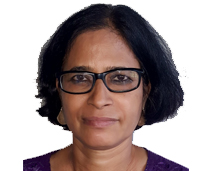Indo-Pak relations: Fresh dawn or false start?
By inviting the leaders of SAARC countries to the swearing-in ceremony, PM-elect Narendra Modi electrified the diplomatic atmosphere in South Asia. While most leaders accepted the invitation almost instantly, Nawaz Sharif took 48 hours to say yes thus fuelling intense media speculations about his compulsions. The attention has now been riveted on the outcome of the Indo-Pakistan summit.
Nawaz Sharif visit to attend the swearing in ceremony is significant in many ways. First, after months of negative publicity and gloomy predictions, the attention of the entire south Asian region and indeed the world has once again been focused on India-Pakistan relations. A lot positive is expected from the visit.
Second, Nawaz Sharif who won the last election on the promise of improving relationship with India now has the chance of taking the process ahead. Even Mr. Modi has promised to take the bilateral relations forward from where his PM Vajpayee had left.
Third, both the leaders have put emphasis on economic relations in which trade ties would figure prominently. Talks to improve trade relations and to provide MFN status, which is now known as Non Discriminatory Market access (NDMA) to India, has been on the agenda of Pakistan government for a long time.
Fourth, both the leaders are trying to overcome the resistance from the hard-line domestic constituencies. For example, Sharif’s visit is taking place in spite of significant resistance from a section within Pakistan Muslim League (PML-N), the right wing constituency represented by Mumbai terror attack mastermind Hafiz Saeed and conservative elements within the Army and the ISI. For Modi, there is no significant opposition to his decision to invite SAARC leaders though there are some words of caution by his political opponents. Some leaders in Mr Modi’s party have been quick to point out that the visit will be ceremonial and not a diplomatic one indicating thereby that not much should be expected from it.
What will the two leaders discuss? For Mr Sharif, who has taken considerable risk in undertaking the visit, Kashmir would be the most important issue. For Mr Modi, stopping the support to terrorism from Pakistani soil is crucial. India would like to get a reaffirmation from Pakistan of the commitment given by General Musharraf to Vajpayee in 2004 that Pakistan would not allow the use of its territory against India for terrorism purposes. This commitment has unfortunately been violated more often than not. India could also agree to the continuation of foreign secretary level talks on Kashmir. This will satisfy both sides. They may also agree to continue with the back channel talks which seem to have progressed well.
Peace and tranquility on the LOC is important for creating a conducive atmosphere for the talks. The DGMO level talks could be made more regular and meaningful. There could be some progress in that direction.
India has been deeply concerned at the development by Pakistan of the short rage nuclear capable missiles. There is a feeling in India that Pakistan may be developing tactical nuclear weapons which can be used against Indian troops. Pakistan has been concerned about Indian military’s so called ‘cold start’ doctrine. There is need for greater clarification on these issues to avoid misapprehensions and accidents.
India has also been concerned at the danger of Pakistan’s nuclear weapons falling into the hands of terrorists. Both sides need to reassure each other about their respective security and nuclear doctrines. Enhanced nuclear CBMs may also be considered. If the right atmosphere prevails there could be a security dialogue between the two countries on these issues at some stage.
There is also a likelihood that the two sides may explore the possibility of cooperating on rebuilding Afghanistan as the ISAF troops withdraw by the end of the year.
Tangible progress can be made on several soft issues. To improve the atmospherics, Pakistan, in a welcome humanitarian gesture, has decided to release 152 fishermen on the 26th May. The symbolism of this gesture cannot be missed as many of the released fishermen are from Gujarat.
Normalisation of trade can be undertaken relatively easily. From the Indian side, there could be an insistence on providing NDMA at the earliest. A decision regarding this was twice postponed in December 2013 and February 2014 by Sharif government.
Another significant possible decision could be to resume the Indo-Pak cricket series. That will have a major psychological impact on India-Pak relations. One of allies of Mr. Modi may have objections but these can be worked around.
The first Modi-Sharif meeting would be significant and will provide the two leaders the opportunity to build mutual trust. But, given the history of numerous false starts, there is a distinct possibility that the bonhomie might collapse sooner than it builds if a terrorist attack takes place or an incident on the line of control gets out of hand. Pakistan cannot afford to take India for granted if a terrorist attack on India from Pakistani soil takes place. Therefore, it would not be in the interest of both the countries to hype the visit and place too much expectation from the proposed bilateral meeting. This visit is an ice-breaker and may herald a new beginning in bilateral relations but there is no alternative to a cautious and step by step approach to the improvement of bilateral ties.
Both prime misters have a limited room for manoeuvre. Yet given the strong mandate, Mr. Modi is in a strong position to put his stamp on the further evolution of Indo-Pakistan relations right from the beginning of his tenure. . He may not be satisfied with just the incremental steps. At some stage he should go for the resolution of the crucial issues. He has already shown the capacity to surprise everyone.
Views expressed are of the author and do not necessarily reflect the views of the IDSA or of the Government of India.





